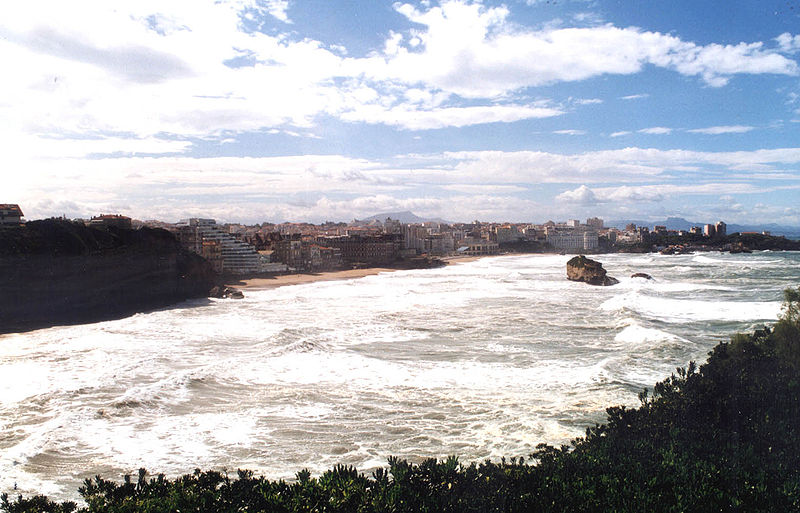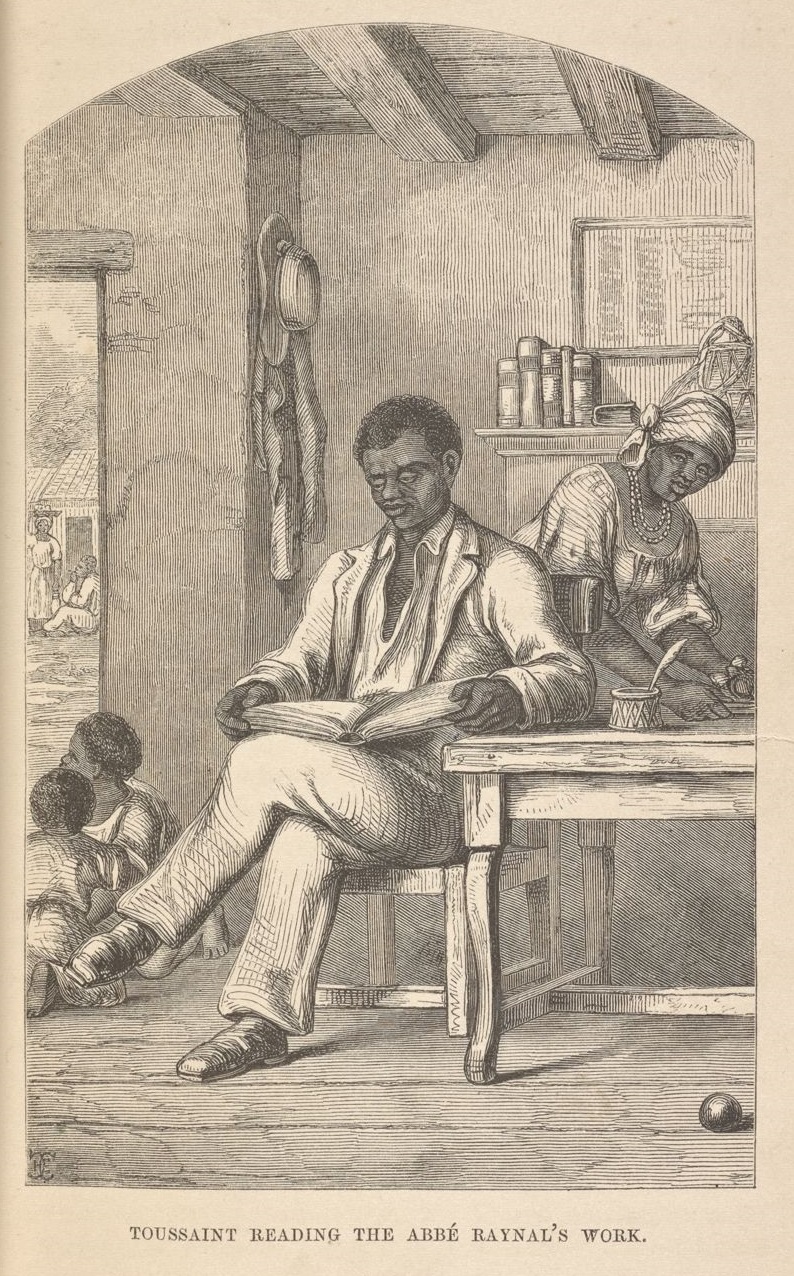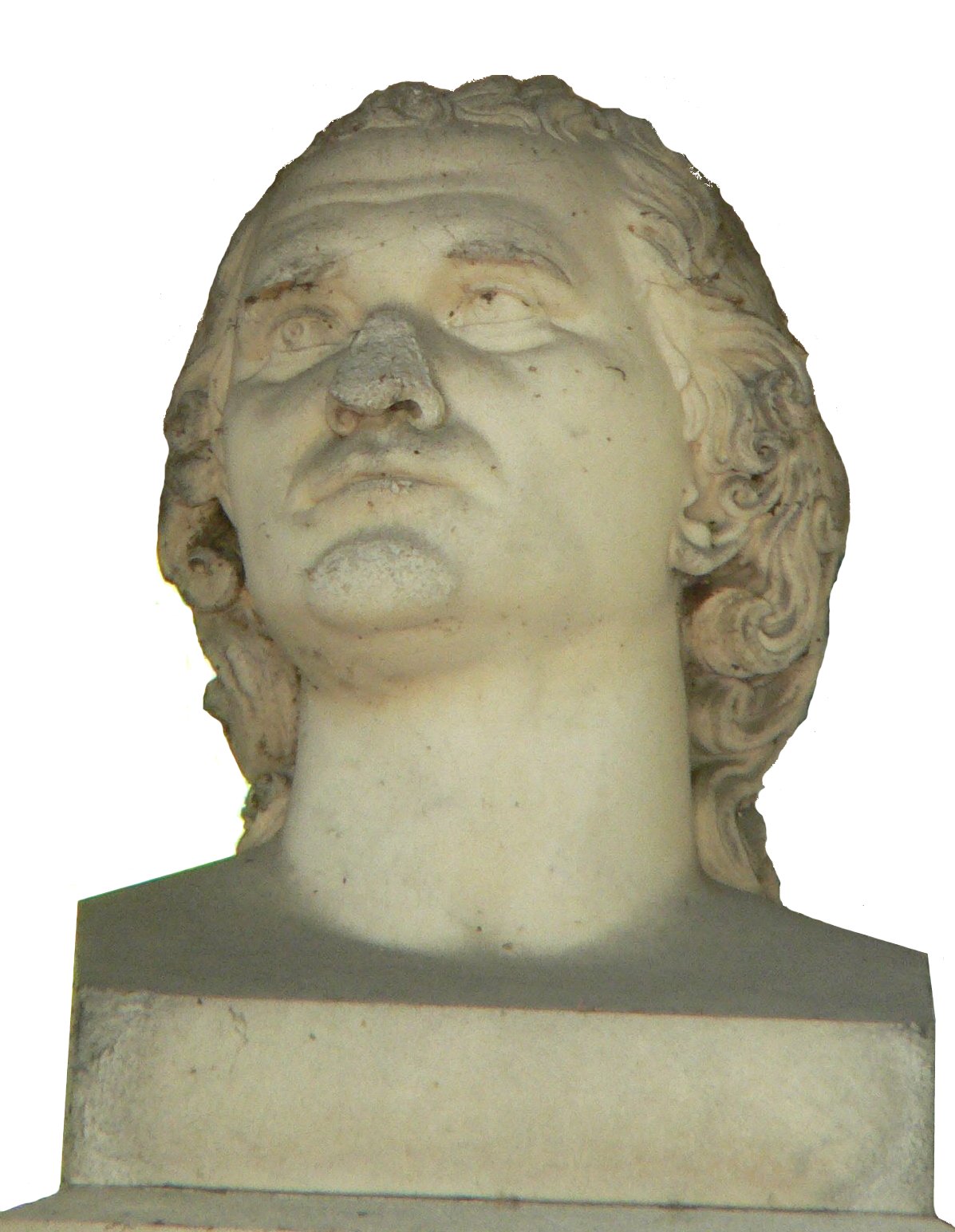|
Jean Dalbarade
Jean Dalbarade (or d'Albarade; 31 August 1743 – 31 December 1819) was a French naval officer who became an extremely successful corsair. In his career at sea he captured many enemy vessels, and was often wounded. He was decorated by King Louis XVI. Dalbarade became Minister of the Navy and Colonies (1793–95) during the French Revolution, at the height of the Reign of Terror. He was ineffective and indecisive in this position. He commanded the port of Lorient for two years, then was dismissed and soon after retired from the navy. Early years Jean Dalbarade was born in Biarritz, Pyrénées-Atlantiques, on 31 August 1743. Of Basque origin, growing up beside the sea, he naturally became a sailor, as did his younger brothers. He sailed as a corsair during the Seven Years' War (1754–1763). At the age of sixteen, on 14 March 1759 he joined the royal ship ''Outarde'' as an apprentice seaman in a voyage to Quebec. On 2 October 1760 he joined the corsair ''Labourt'' from Saint-Je ... [...More Info...] [...Related Items...] OR: [Wikipedia] [Google] [Baidu] |
Biarritz
Biarritz ( , , , ; Basque also ; oc, Biàrritz ) is a city on the Bay of Biscay, on the Atlantic coast in the Pyrénées-Atlantiques department in the French Basque Country in southwestern France. It is located from the border with Spain. It is a luxurious seaside tourist destination known for the Hôtel du Palais (originally built for the Empress Eugénie circa 1855), its casinos in front of the sea and its surfing culture. Geography Biarritz is located in the Pyrénées-Atlantiques department in the Nouvelle-Aquitaine region. It is part of the arrondissement of Bayonne. It is adjacent to Bayonne and Anglet and from the border with Spain. It is in the traditional province of Labourd in the French Basque Country. Gallery File:Édouard_Zier_-_Les_baigneuses_à_Biarritz.jpg, ''Les baigneuses à Biarritz'', by Édouard François Zier File:Biarritz1999.jpg, Biarritz from the Pointe Saint-Martin. File:Grande Plage de Biarritz.jpg, ''La Grande Plage'', the town's largest b ... [...More Info...] [...Related Items...] OR: [Wikipedia] [Google] [Baidu] |
Jacques François Dugommier
Jacques François Coquille named Dugommier (1 August 1738, Trois-Rivières, Guadeloupe – 18 November 1794, at the Battle of the Black Mountain) was a French general. Biography Early life Jacques François Dugommier was born on 1 August 1738 in Trois-Rivières, Guadeloupe. Early career He entered service in 1759 in the unsuccessful defense of Guadeloupe and fought in Martinique in the Seven Years' War. He took the name ''Dugommier'' in 1785. He joined the Revolutionaries. Commander in the Italian Army In September 1793, he drove the troops of the Habsburg monarchy and the Kingdom of Sardinia from Nice. He defeated Joseph De Vins' Austrians at city of Gilette. While a Deputy of the French Convention, Dugommier succeeded General Jean François Carteaux as commander of the army besieging Toulon. Recognizing that the attack plan of a young artillery major named Napoleon Bonaparte was the correct one, Dugommier carried it out. In December 1793, he brought the Siege of Toulon ... [...More Info...] [...Related Items...] OR: [Wikipedia] [Google] [Baidu] |
Committee Of Public Safety
The Committee of Public Safety (french: link=no, Comité de salut public) was a committee of the National Convention which formed the provisional government and war cabinet during the Reign of Terror, a violent phase of the French Revolution. Supplementing the Committee of General Defence created after the execution of King Louis XVI in January 1793, the Committee of Public Safety was created in April 1793 by the National Convention. It was charged with protecting the new republic against its foreign and domestic enemies, fighting the First Coalition and the Vendée revolt. As a wartime measure, the committee was given broad supervisory and administrative powers over the armed forces, judiciary and legislature, as well as the executive bodies and ministers of the Convention. As the committee, restructured in July, raised the defense ('' levée en masse'') against the monarchist coalition of European nations and counter-revolutionary forces within France, it became more and more ... [...More Info...] [...Related Items...] OR: [Wikipedia] [Google] [Baidu] |
Commissioners Of The Committee Of Public Safety
The Commissioners of the Committee of Public Safety were appointed by the French Committee of Public Safety to oversee the various administrative departments between 1 April 1794 and 1 November 1795. History On 12 Germinal year II (1 April 1794) Lazare Carnot proposed suppressing the Executive Council and the six ministers, replacing the ministers with twelve committees reporting to the Committee of Public Safety. The proposal was unanimously adopted by the National Convention The National Convention (french: link=no, Convention nationale) was the parliament of the Kingdom of France for one day and the French First Republic for the rest of its existence during the French Revolution, following the two-year Nationa .... The commissioners were dismissed when a new set of ministers was named by the French Directory on 3 November 1795. Committees Twelve committees were appointed, each composed of two members and one assistant, reporting to the Committee of Public Safety. ... [...More Info...] [...Related Items...] OR: [Wikipedia] [Google] [Baidu] |
Lazare Carnot
Lazare Nicolas Marguerite, Count Carnot (; 13 May 1753 – 2 August 1823) was a French mathematician, physicist and politician. He was known as the "Organizer of Victory" in the French Revolutionary Wars and Napoleonic Wars. Education and early life Carnot was born on 13 May 1753 in the village of Nolay, in Burgundy, as the son of a local judge and royal notary, Claude Carnot and his wife, Marguerite Pothier. He was the second oldest of seven children. At the age of fourteen, Lazare and his brother were enrolled at the ''Collège d'Autun'', where he focused on the study of philosophy and the classics. He held a strong belief in stoic philosophy and was deeply influenced by Roman civilization. When he turned fifteen, he left school in Autun to strengthen his philosophical knowledge and study under the Society of the Priests of Saint Sulpice. During his short time with them, he studied logic, mathematics and theology under the Abbe Bison. After being impressed with Lazare's work a ... [...More Info...] [...Related Items...] OR: [Wikipedia] [Google] [Baidu] |
Toussaint Louverture
François-Dominique Toussaint Louverture (; also known as Toussaint L'Ouverture or Toussaint Bréda; 20 May 1743 – 7 April 1803) was a Haitian general and the most prominent leader of the Haitian Revolution. During his life, Louverture first fought against the French, then for them, and then finally against France again for the cause of Haitian independence. As a revolutionary leader, Louverture displayed military and political acumen that helped transform the fledgling slave rebellion into a revolutionary movement. Louverture is now known as the "Father of Haiti". Louverture was born enslaved on the French colony of Saint-Domingue, now known as Haiti. He was a devout Catholic who became a freeman before the revolution and, once freed, identified as a Frenchman for the greater part of his life. During his time as a freeman he attempted to climb the highly stratified social ladder on the island, combatting racism whilst gaining and losing much wealth while working as ... [...More Info...] [...Related Items...] OR: [Wikipedia] [Google] [Baidu] |
Gaspard Monge
Gaspard Monge, Comte de Péluse (9 May 1746 – 28 July 1818) was a French mathematician, commonly presented as the inventor of descriptive geometry, (the mathematical basis of) technical drawing, and the father of differential geometry. During the French Revolution he served as the Minister of the Marine, and was involved in the reform of the French educational system, helping to found the École Polytechnique. Biography Early life Monge was born at Beaune, Côte-d'Or, the son of a merchant. He was educated at the college of the Oratorians at Beaune. In 1762 he went to the Collège de la Trinité at Lyon, where, one year after he had begun studying, he was made a teacher of physics at the age of just seventeen. After finishing his education in 1764 he returned to Beaune, where he made a large-scale plan of the town, inventing the methods of observation and constructing the necessary instruments; the plan was presented to the town, and is still preserved in their library. ... [...More Info...] [...Related Items...] OR: [Wikipedia] [Google] [Baidu] |
Santo Domingo
, total_type = Total , population_density_km2 = auto , timezone = AST (UTC −4) , area_code_type = Area codes , area_code = 809, 829, 849 , postal_code_type = Postal codes , postal_code = 10100–10699 (Distrito Nacional) , website Ayuntamiento del Distrito Nacional Santo Domingo ( meaning "Saint Dominic"), once known as Santo Domingo de Guzmán and Ciudad Trujillo, is the capital and largest city of the Dominican Republic and the largest metropolitan area in the Caribbean by population. As of 2022, the city and immediate surrounding area (the Distrito Nacional) had a population of 1,484,789, while the total population is 2,995,211 when including Greater Santo Domingo (the "metropolitan area"). The city is coterminous with the boundaries of the Distrito Nacional ("D.N.", "National District"), itself bordered on three sides by Santo Domingo Province. Founded by the Spanish in 1496, on the east bank of the Ozama River and then moved by Nicolás de Ovando in 1502 ... [...More Info...] [...Related Items...] OR: [Wikipedia] [Google] [Baidu] |
Senegal
Senegal,; Wolof: ''Senegaal''; Pulaar: 𞤅𞤫𞤲𞤫𞤺𞤢𞥄𞤤𞤭 (Senegaali); Arabic: السنغال ''As-Sinighal'') officially the Republic of Senegal,; Wolof: ''Réewum Senegaal''; Pulaar : 𞤈𞤫𞤲𞤣𞤢𞥄𞤲𞤣𞤭 𞤅𞤫𞤲𞤫𞤺𞤢𞥄𞤤𞤭 (Renndaandi Senegaali); Arabic: جمهورية السنغال ''Jumhuriat As-Sinighal'') is a country in West Africa, on the Atlantic Ocean coastline. Senegal is bordered by Mauritania to the north, Mali to the east, Guinea to the southeast and Guinea-Bissau to the southwest. Senegal nearly surrounds the Gambia, a country occupying a narrow sliver of land along the banks of the Gambia River, which separates Senegal's southern region of Casamance from the rest of the country. Senegal also shares a maritime border with Cape Verde. Senegal's economic and political capital is Dakar. Senegal is notably the westernmost country in the mainland of the Old World, or Afro-Eurasia. It owes its name to the ... [...More Info...] [...Related Items...] OR: [Wikipedia] [Google] [Baidu] |
Jean Bon Saint-André
Jean may refer to: People * Jean (female given name) * Jean (male given name) * Jean (surname) Fictional characters * Jean Grey, a Marvel Comics character * Jean Valjean, fictional character in novel ''Les Misérables'' and its adaptations * Jean Pierre Polnareff, a fictional character from ''JoJo's Bizarre Adventure'' Places * Jean, Nevada, USA; a town * Jean, Oregon Jean is an unincorporated community in Clackamas County, Oregon Oregon () is a U.S. state, state in the Pacific Northwest region of the Western United States. The Columbia River delineates much of Oregon's northern boundary with Washingt ..., USA Entertainment * Jean (dog), a female collie in silent films * "Jean" (song) (1969), by Rod McKuen, also recorded by Oliver * ''Jean Seberg'' (musical), a 1983 musical by Marvin Hamlisch Other uses * JEAN (programming language) * USS ''Jean'' (ID-1308), American cargo ship c. 1918 * Sternwheeler Jean, a 1938 paddleboat of the Willamette River See also ... [...More Info...] [...Related Items...] OR: [Wikipedia] [Google] [Baidu] |
Quiberon
Quiberon (; , ) is a commune in the French department of Morbihan, administrative region of Brittany, western France. It is situated on the southern part of the Quiberon peninsula, the northern part being the commune of Saint-Pierre-Quiberon. It is primarily known as a seaside resort for French tourists during summer, and for its history of sardine production. Quiberon is connected to the mainland by a tombolo. History During the Seven Years' War the bay was the site of the Battle of Quiberon Bay (1759) between the French and British fleets. Then later in July 1795 during the period of the French Revolution, Quiberon was also used by French Royalist exiles, with assistance from the British, as the base for a failed invasion of Brittany (traditionally a royalist area). The invasion was defeated by the Revolutionaries under General Lazare Hoche. In the 19th century, Nicolas Appert, a chemist, developed a technique that permitted the sterilization of food. Thanks to this process ... [...More Info...] [...Related Items...] OR: [Wikipedia] [Google] [Baidu] |
Yves-Joseph De Kerguelen-Trémarec
Yves-Joseph de Kerguelen-Trémarec (13 February 1734 – 3 March 1797) was a French Navy officer. He discovered the Kerguelen Islands during his first expedition to the southern Indian Ocean. Welcomed as a hero after his voyage and first discovery, Kerguelen fell out of favour after his second voyage and was cashiered for violating Navy regulations. He was rehabilitated during the French Revolution. Kerguelen also authored books about expeditions and about French naval operations during the American Revolutionary War. Biography Early life He was born in Landudal, Brittany. During the Seven Years' War, Kerguelen-Trémarec was a privateer, but without much success. Rockall In 1767 he sailed near Rockall, or ''Rokol''. Although he may not have approached within sight of it, or even within 150 miles, he appears to have had good information regarding it. His charted position for it was only 16 miles north of its actual position and he accurately described its appearance and t ... [...More Info...] [...Related Items...] OR: [Wikipedia] [Google] [Baidu] |






